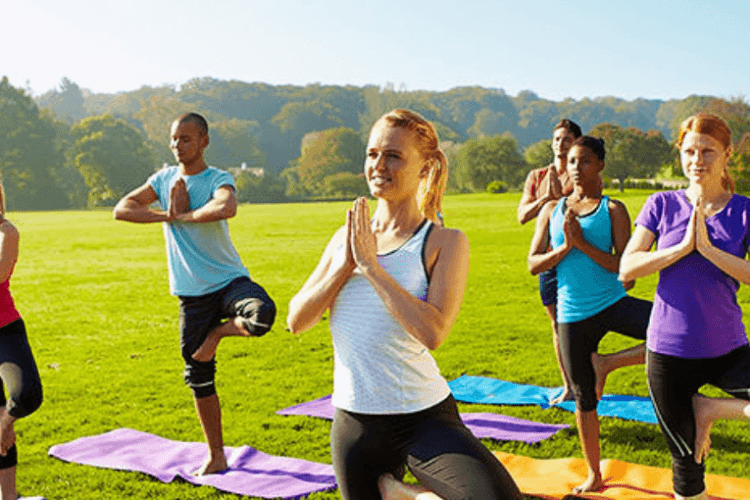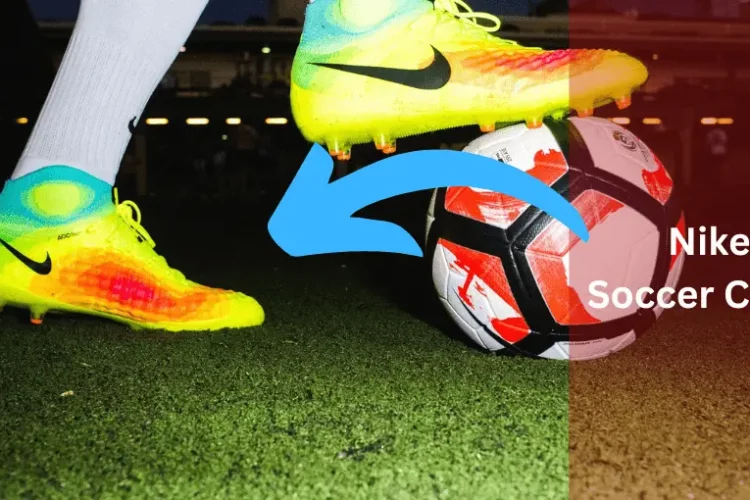Making Waves: How to Choose A Kayak for Your Adventures

Are you ready to dive into the world of kayaks and choose your very own water buddy? Just like picking the best superhero for your team, choosing a kayak is an exciting mission!
In this guide, I’ll embark on a fun journey to discover how to choose a kayak that will make your water adventures unforgettable.
Gliding through gentle waves, exploring secret coves, and feeling the splash of water as you paddle along. Your kayak is like a magical ship that takes you on incredible journeys.
So, let’s unravel the mysteries of kayak choosing together and find the one that will be your trusty sidekick on the water. Ready, set, paddle!
What is a Kayak?
Let us begin with the obvious from Wikipedia: what exactly is a kayak, and why might you want one?
A kayak is a small boat that users paddle to explore different waterways. In a kayak, you can explore small streams and creeks, go fishing on a lake, or tour the coast of the ocean.
Kayaks come in single-rider and tandem varieties, and many of them have enough room inside for your pet.
Kayaking is a calm activity that allows you to exercise and connect with nature.
What To Consider To Choose a Kayak?
When you go to choosing the best kayak, some questions is being arrived.
Answering some of these questions sometimes can be challenging.
It’s best to keep in mind your preferred method of use if you only intend to purchase one kayak.
Where Do You Plan to Use Your Kayak?
Calm lakes, canals, and rivers: These are mostly classified as “flat,” which means they have few or no significant currents, waves, or whitecaps.
They frequently receive some wind protection as well.
You can paddle a recreational sit-in or sit-on-top kayak on these kinds of waters.
Massive lakes and coastlines: Large lakes are sometimes just as vulnerable to strong winds and waves as coastal waters.
Sea kayaks or touring kayaks will work better because of this.
Better tracking and speed are provided by their long, streamlined design, which could include a rudder or skeg.
In the meantime, the storage spaces add buoyancy. So even if you capsize, your kayak won’t sink.
Whitewater and swift rivers: A 17-foot touring kayak won’t be able to turn quickly enough when you’re paddling on fast-moving rivers.
Short, wave-riding, and capable of turning with just one paddle stroke, creek boats, and river runners.
On swift-moving rivers with class I to II rapids, a short touring kayak with a skeg or rudder may also be effective.
How Much Time Will Be Spent Paddling?
How long you’ll be on the water is something else to think about. Do you usually kayak for a few hours, a half-day, or all day?
Perhaps you want a kayak that can be used for a multi-day trip.
On a lengthy kayaking trip, certain features—like a comfortable seat, storage hatches, and deck riggings—come in handy.
However, any kayak you bring on a long trip will also work well for day trips.
So, before purchasing, a kayak for a long tour, keep in mind all of these features.
For trips of up to a day, you need these types of kayaks, which provide enough room for your water, sandwiches, and safety equipment.
With Whom Will You kayak?
Do you typically go kayaking with your partner or kids? Or are you a novice practicing paddling alongside an expert?

You might want to select a tandem kayak if any of these situations apply.
For beginners, tandem kayaking is a fantastic way to gain experience and confidence on the water.
You can’t become separated from the other paddler, making them a practical choice for parents and couples.
A tandem kayak will also take up less room in your home for storage than two singles, which is an additional benefit.
On the other hand, paddling a tandem solo is uncomfortable, so it’s not the best option if you and your paddle partner have conflicting schedules.
In addition, you’ll need to practice synchronizing your paddling.
The Kayak Is For Whom?
Do you intend to buy a kayak for yourself? Are you new to kayaking, or have you done it before?
If the kayak is right for you, think about your kayaking skills.
If you’ve never kayaked before, you should probably start with something more stable and manageable.
Similar to how you should put stability and maneuverability above kayak size when picking a kayak for kids.
Most kids will find it difficult to maneuver a full-sized kayak.
Store and Transport Your Kayak?
You should also think about how to select a kayak based on the amount of storage you have.
Are you a resident of an apartment complex? Do you also possess a private yard or garage?
Does your vehicle have a roof rack? Or do you use public transportation?
Hardshell kayaks perform better if you can find a storage facility where you can keep your kayak next to the water. But they require more storage space and a vehicle to transport them.
For instance, a kayaking or boating club with a safe boatyard.
Types Of Kayak
Kayaks are available in a wide variety of sizes and shapes. We’ll go over the most popular models in this section.
Check out our article on the various types of kayaks to learn more about all the different models and their advantages and disadvantages.
Seat-in Kayaks
There are two types of kayaks on the market.
They are better for paddling in cold weather, rough water, and in the winter because they offer much more protection from wind and rain.
The sitting position, with thigh/knee braces and footpegs, also improves kayak control.
Sit-on-Top Kayaks
For flat water and leisurely paddling, sit-on-top kayaks are typically the best option.
You are less likely to capsize because they are typically more stable than sit-in kayaks.
When you do capsize, a sit-on-top kayak is simpler to get back on without help from your paddle partner.
Additionally, there is little chance that your kayak will float because water can exit through scupper holes in the deck.
Category Of a Kayak
These types of kayaks are the most affordable and perfect for beginners.
They are the most stable, maneuverable, and suitable for paddling on calm waters. Recreational sit-in kayaks feature spacious cockpits that are easy to enter and exit.
Day Tours Kayak
Day touring kayaks serve as a transitional vessel between touring and recreational kayaks.
They track better, are typically 10 to 14 feet long, and are narrower than recreational kayaks. They still have a sizable cockpit and a sturdy hull, though.
Day touring kayaks are versatile and a sensible option for trips lasting half a day to a full day or for smaller paddlers.
They also give novice paddlers the chance to develop their kayak handling abilities.
The majority of storage spaces have hatches, just like full-sized touring kayaks.
Sea Touring Kayak
Sea-touring kayaks are great for covering large distances and hauling gear. They typically range in length from 14 feet to over 20 feet.
They are less vulnerable to wind, currents, and waves because of their long, aerodynamic shape.
Your body experiences less strain while paddling as a result.
Kayaks For Fishing
It is similar to recreational kayaks, but fishing kayaks tend to be longer and more capable of towing heavier loads.
They have rod holders, adjustable seats, storage, and deck rigging.
Although sit-in versions are also available, sit-on-top fishing kayaks are more common.
Inflatable And Folding Kayaks
Both inflatable and folding kayaks have the benefit of being simple to store and move.
They fit inside an apartment and don’t require a roof rack.
Both kayaks perform admirably on flat water, but inflatable kayaks move more slowly and tracklessly effectively than hardshell kayaks.
Kayaks For Whitewater
Whitewater kayaks have a narrow hull, and a small turning circle, and are typically between 4 and 10 feet in length.
There are several different types and a wide range of specific features for whitewater kayaks, including:
- Playboats
- River runners
- Creek boats
Construction Materials Of a Kayak
You will also need to decide between plastic and composite construction when selecting a rigid kayak.
Therefore, it’s crucial to be aware that each material has both benefits and drawbacks relative to the others.
Let’s read about some materials:
Composites
Composite kayaks are the best choice for experienced paddlers. They use this type of kayak for high-performance day tours, multi-day camping trips, and races.
The main fact is that composite kayaks are more rigid than plastic kayaks.
Additionally, composite materials are far more able to be molded into hull designs than plastic.
As a result, composite kayaks are made of fiberglass, Kevlar, and carbon fiber. They are much lighter and faster than kayaks made of thermo-molded plastic.
Plastic ABS
ABS plastic kayaks are a good compromise for paddlers who want a high-performance kayak without the high cost of composite kayaks.s
Despite being a little more expensive than kayaks made of polyethylene plastic. Kayaks made of ABS plastic are more rigid and weigh less.
When compared to polyethylene models, ABS plastic kayaks perform better.
ABS plastic kayaks are more UV-resistant than polyethylene ones
Polyethylene
Rotomolded polyethylene kayaks are the cheapest, least rigid, and heaviest.
All sit-on-top kayaks and leisurely sit-inside kayaks are typically made of polyethylene.
However, polyethylene kayaks are also a lot more durable than composite kayaks.
They are the best option when a tough kayak is required for landing on rocky shores or playing in rock gardens.
Conversely, polyethylene models are more difficult to paddle and are not as suitable for touring or long-distance expeditions due to their relative weight.
Additionally, plastic kayaks are more challenging to load, unload, and transport.
Dimensions of Kayak
Now that you’ve hopefully begun to focus on which kayak will work best for you, let’s go into more detail about kayak specifics.
The best kayak may occasionally be chosen based on the smallest of details.
Heavy Capacity
You have to calculate not only your own weight but also the weight of your equipment. It can be included coolers or tackle boxes when thinking about the weight capacity
Overfilling your kayak will cause you to sit low in the water and increase your chances of capsizing.
If you are more buoyant, you have more control.
Length
A short kayak hull turns quickly and is easier to maneuver, whereas a long kayak tracks better and moves faster in the water.
Depth
A kayak with a deep hull will have more leg room and warmth. It also means you will have more leg space
Width
A narrower kayak will travel faster and be ideal for touring.
A broad kayak is preferred for overall recreational and fishing kayaks because it is more stable.
Flat Hull
A flat hull is more stable and maneuverable, making it an excellent choice for beginners.
It is typically found on flat-water recreational kayaks.
Round Hull
A curved or rounded hull will allow you to travel faster than a flat hull and be more maneuverable once on the water.
Conclusion
When purchasing a new kayak, there are numerous factors to consider.
After deciding on the type of water location you want to discover, you can choose which style of kayak best fits that niche.
After you’ve narrowed down your options, consider everything from the comfort of the seat to the storage space and the quality of the foot pegs.
And, then, hope you will get the best one that you deserve!
FAQs
For beginners, it's great to start with a recreational kayak. They're stable and easy to handle, perfect for getting the hang of paddling.
The right size is determined by your weight and height. Choose a kayak that feels comfortable and allows you to move freely.
Yes, there are kayaks specially designed for kids. They are smaller, lighter, and easier for young adventurers to handle.
Sit-in kayaks have an enclosed cockpit, providing more protection from water. Sit-on-top kayaks have an open design, making them easier to get in and out of.
If you want to paddle alone, choose a single kayak. If you like the idea of kayaking with a friend, go for a tandem kayak. Tandem kayaks are also great for family adventures.


